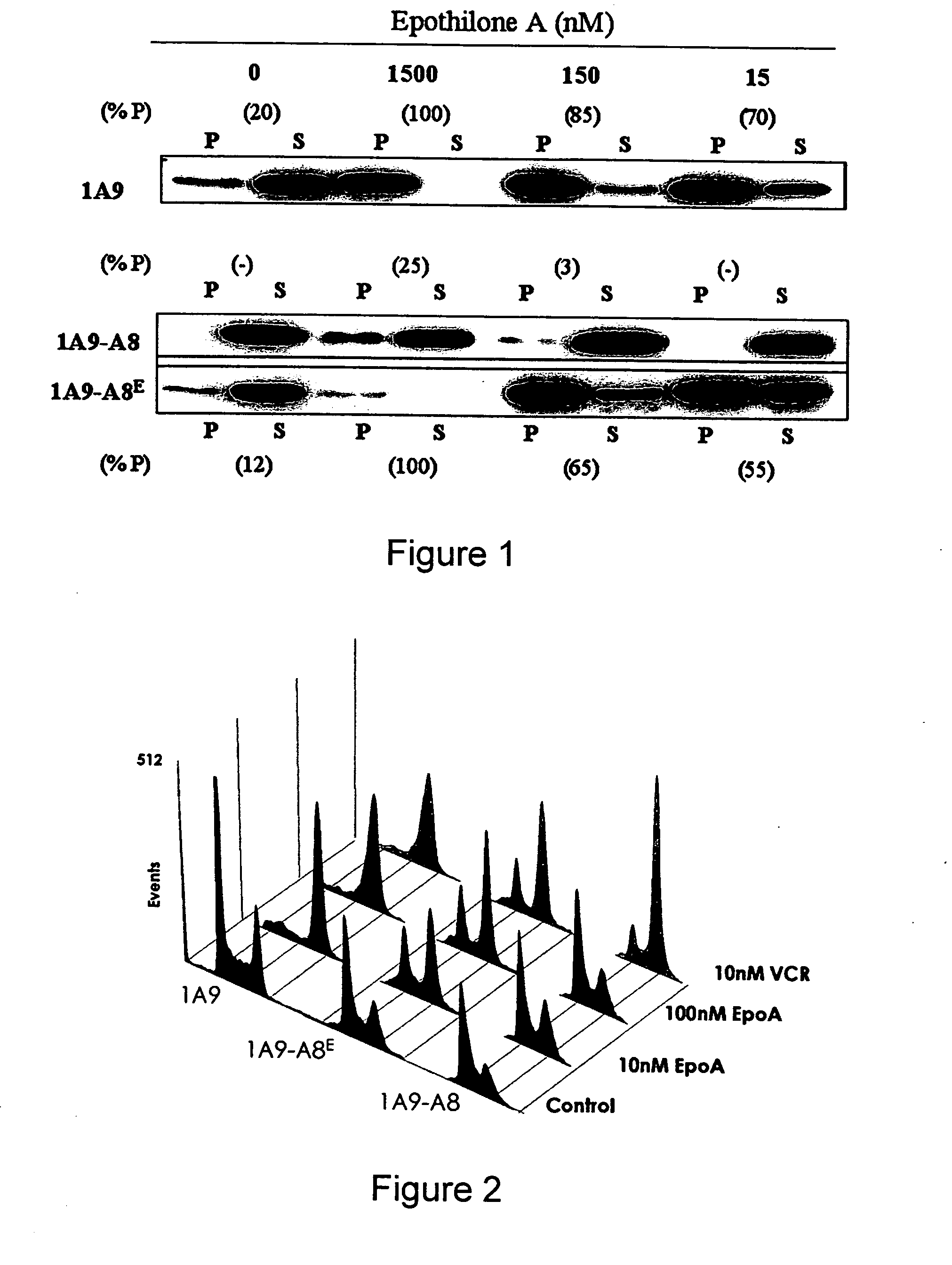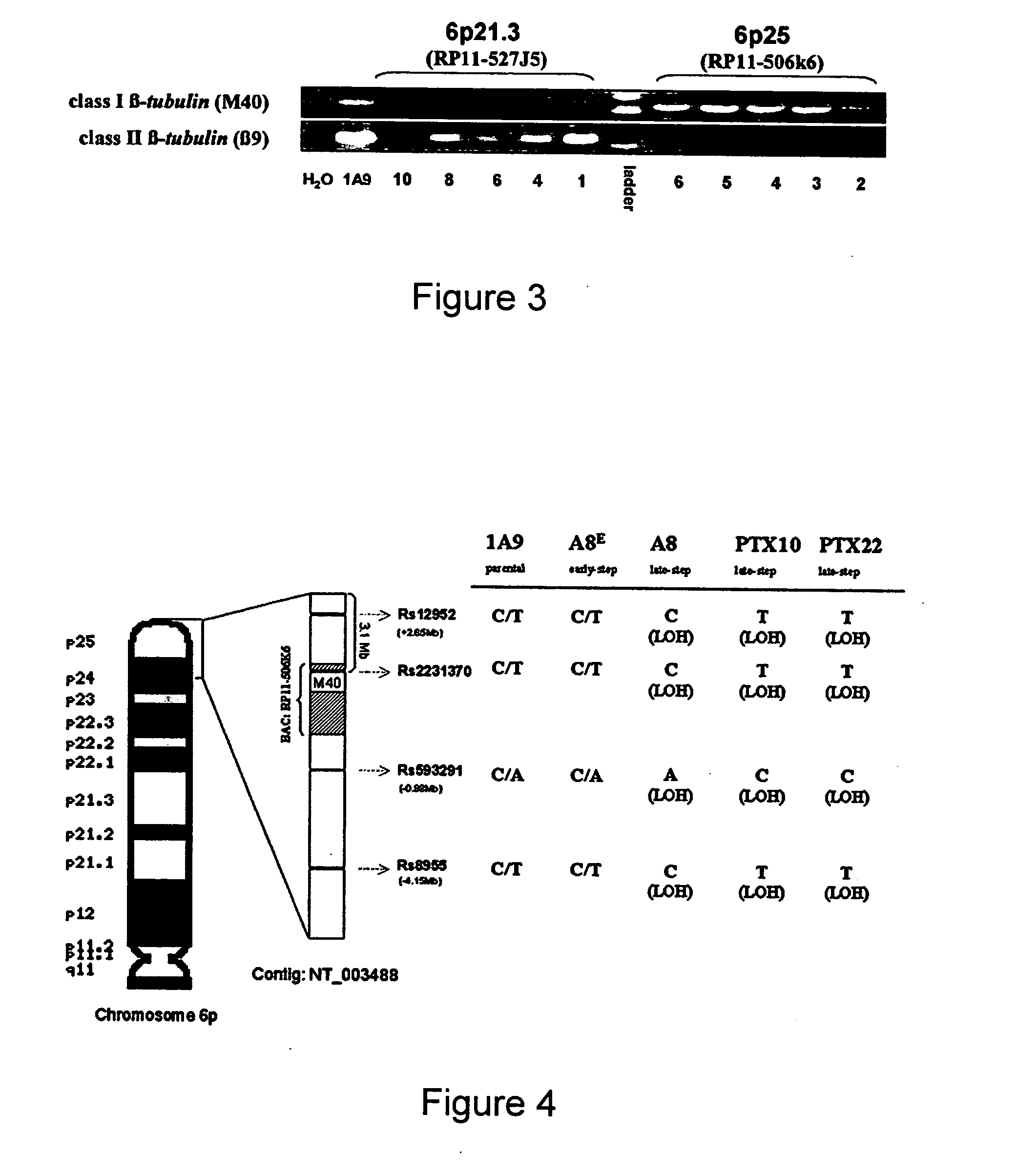Methods of screening for resistance to microtuble-targeting drugs
a technology of microtubules and resistance, applied in the field of screening for resistance to microtubule-targeting drugs, can solve the problems of limiting the ability of these compounds to cure disease, inducing cell death, and affecting the survival rate of patients, and achieve the effect of reducing the likelihood
- Summary
- Abstract
- Description
- Claims
- Application Information
AI Technical Summary
Benefits of technology
Problems solved by technology
Method used
Image
Examples
example 1
[0036] Acquired tubulin mutations represent the main mechanism by which cancer cells become resistant to drugs that target microtubules (Kavallaris et al. (2001) Cancer Research 61:5803-5809; Giannakakou et al. (1997) J. Biol. Chem. 272:17118-17125; Gonzalez-Garay et al. (1999) J. Biol. Chem. 274:23875-23882; Giannakakou et al. (2000) Proc. Natl. Acad. Sci. USA 97:2904-2909; He et al. (2001) Molecular Cancer Therapeutics 1:3-10; Hua et al. (2001) Cancer Res. 61:7248-7254; Mehdi et al. (2001) Proc. American Assoc. Cancer Res. 42:920). However, the temporal sequence of the molecular events that occur during the development of drug resistance to microtubule-targeting drugs is not known. To investigate the molecular events that occur during the development of drug resistance to microtubule-specific drugs, as well as the adaptive temporal stages in the development of a stable resistance phenotype, a model of epothilone resistance as described by Giannakakou et al. ((2000) Proc. Natl. Aca...
PUM
| Property | Measurement | Unit |
|---|---|---|
| pH | aaaaa | aaaaa |
| microtubule-targeting drug resistance | aaaaa | aaaaa |
| drug resistance | aaaaa | aaaaa |
Abstract
Description
Claims
Application Information
 Login to View More
Login to View More - R&D
- Intellectual Property
- Life Sciences
- Materials
- Tech Scout
- Unparalleled Data Quality
- Higher Quality Content
- 60% Fewer Hallucinations
Browse by: Latest US Patents, China's latest patents, Technical Efficacy Thesaurus, Application Domain, Technology Topic, Popular Technical Reports.
© 2025 PatSnap. All rights reserved.Legal|Privacy policy|Modern Slavery Act Transparency Statement|Sitemap|About US| Contact US: help@patsnap.com


